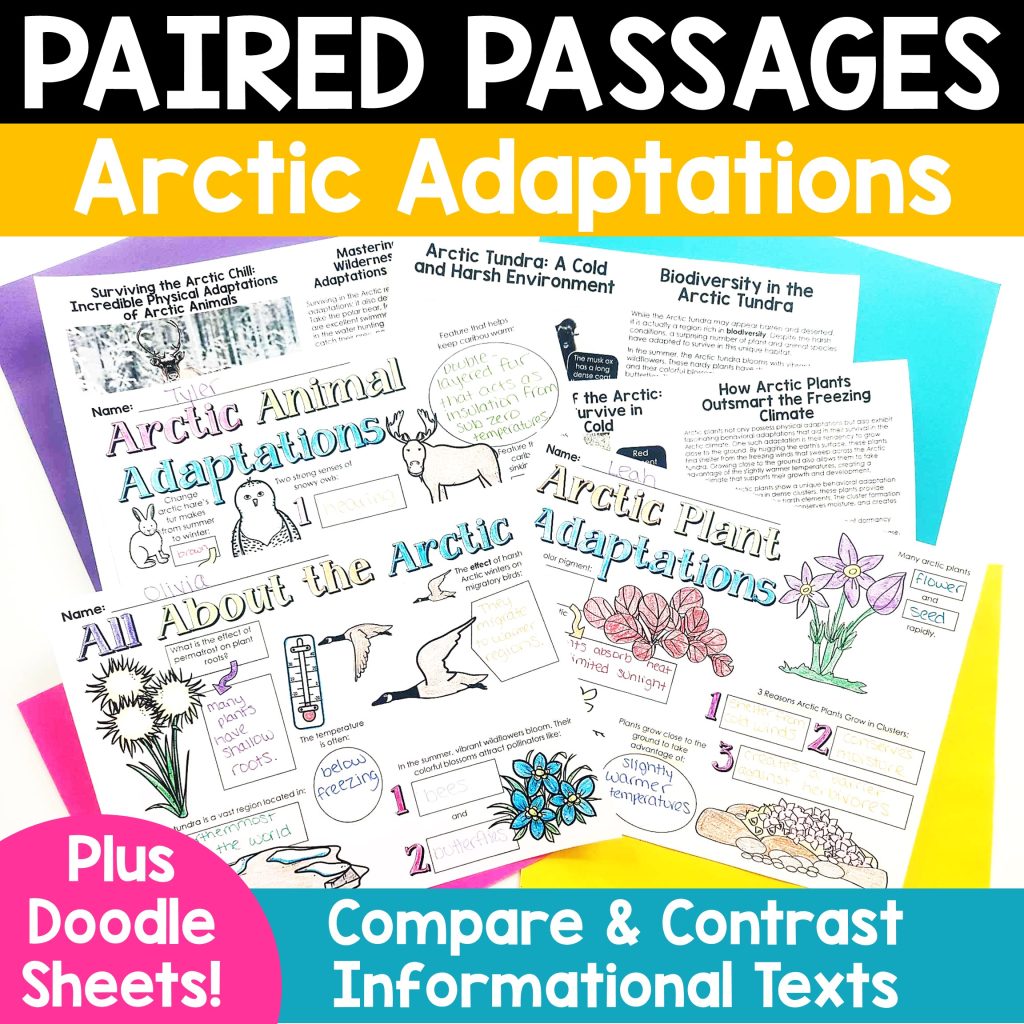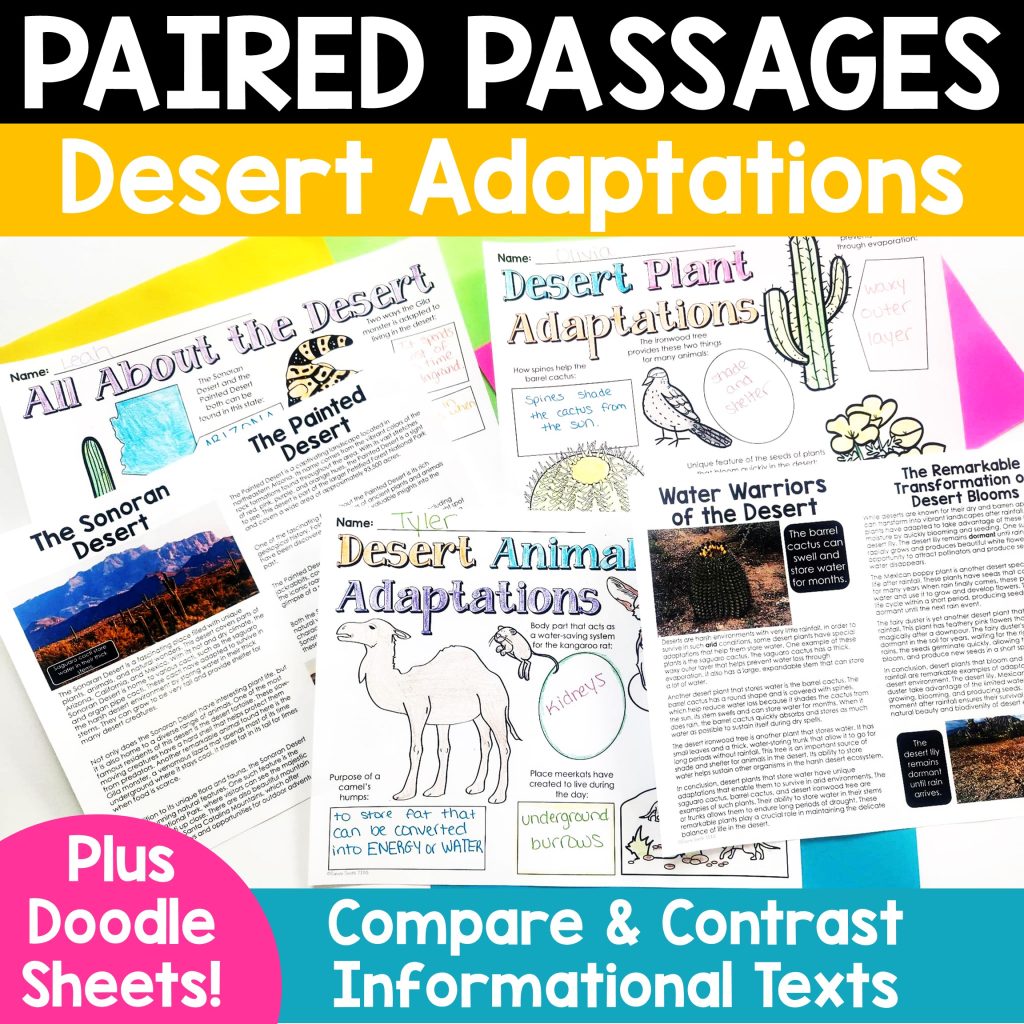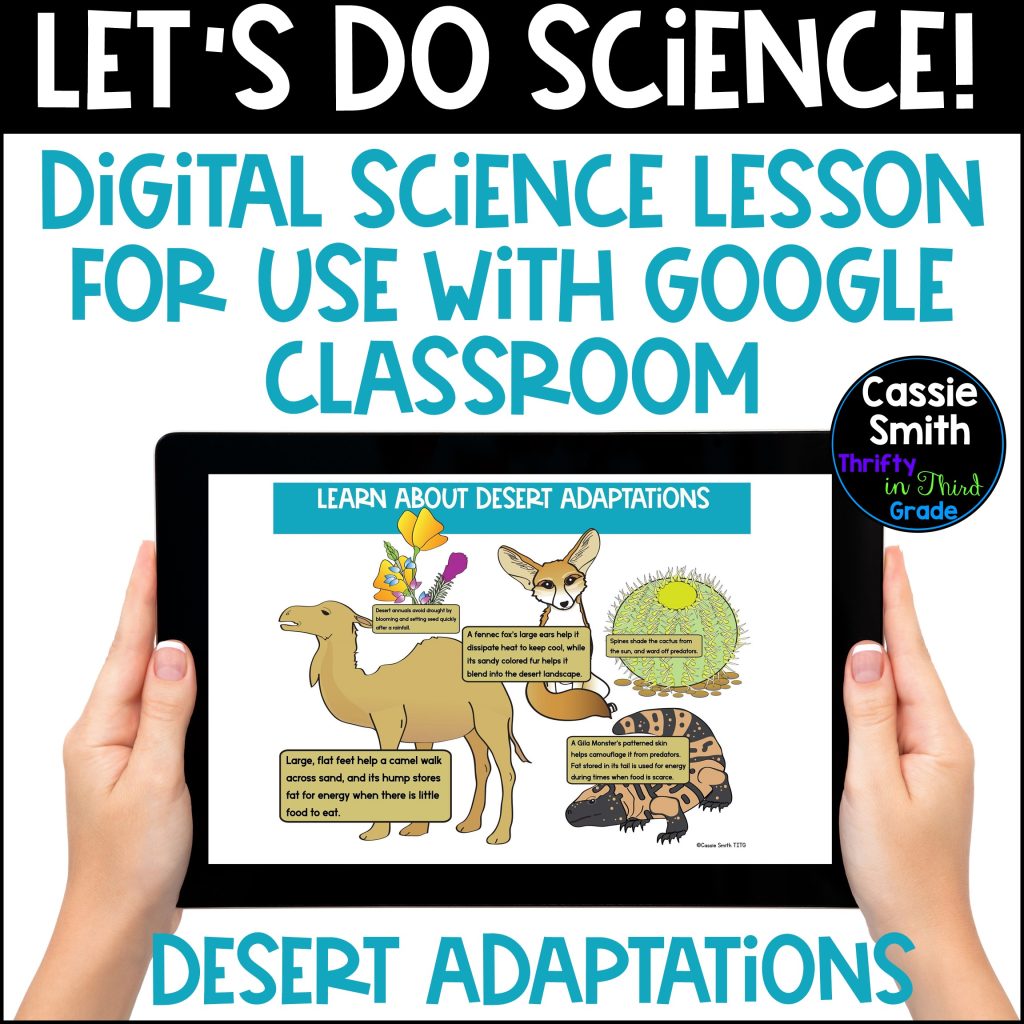Teaching animal adaptations can be so much fun, but let’s be real—it’s not always easy for students to grasp how physical and behavioral adaptations help animals survive. Concepts like “migration” and “camouflage” might sound simple to us, but for 3rd graders, it can feel abstract and tricky to connect to real life.

That’s why I love using hands-on, creative activities to make these lessons stick. One fun way to teach animal adaptations is using paired reading passages and a corresponding doodle sheet. Not only does it engage students with reading, writing, and creativity, but it also gives them a chance to learn about behavioral and physical animal adaptations.
If you’re teaching 3rd grade NGSS science standards or working on an animal adaptations unit, this activity will bring the topic to life in your classroom!
What Are Animal Adaptations?
Before jumping into the activity, it’s important to set the stage and define animal adaptations for your students.
Animal adaptations are special traits or behaviors that help animals survive in their environments. There are two main types:
- Physical adaptations: These are body features or structures, like a polar bear’s thick fur to keep it warm in the Arctic or a giraffe’s long neck to reach leaves on tall trees.
- Behavioral adaptations: These are actions or habits, like birds migrating to warmer climates or squirrels storing food for winter.
I like to frame this concept with examples that make students go, “Oh, that makes sense!” For instance, you might say:
“Think about how a camel’s hump stores fat for energy in the desert—that’s a physical adaptation. Now picture a penguin huddling with its friends to stay warm—that’s a behavioral adaptation.”
The physical adaptation is part of the animal while the behavioral adaptation is something the animal does.
This quick example helps students connect adaptations to different habitats and understand why they’re essential for survival.
The Best Activity for Teaching Animal Adaptations
One of my favorite ways to learn about animal adaptations is with these paired passages animal adaptations worksheets + doodle sheet combo. This activity is a mix of close reading, independent work, and creativity.
Step 1: Start with the Paired Passage Animal Adaptation Worksheet
In each of the packs above, your students will read two passages, one on the behavioral adaptations and one on the physical adaptations of the animals in the biome.
Not only will students learn about animal adaptations with these worksheets, but they’ll also practice their reading comprehension with the question sheet and the doodle sheet. (Answer key is included!)
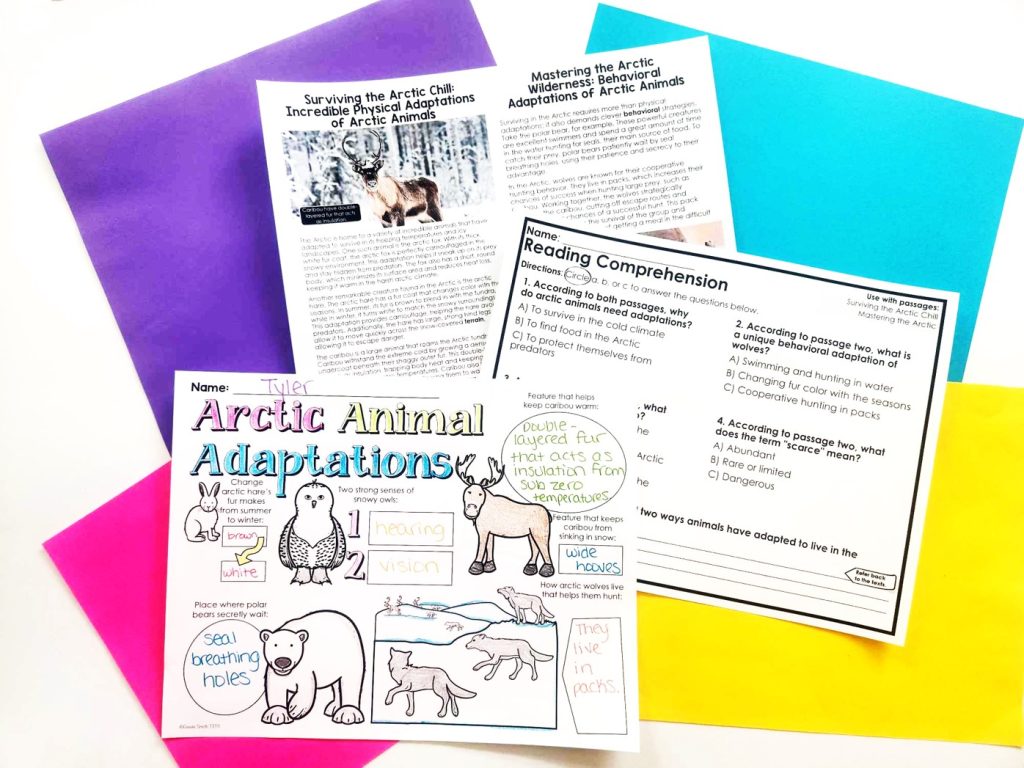
The comprehension worksheet is perfect for independent work or small group stations, giving you the flexibility to support students as they work.
Step 2: Add a Creative Twist with the Doodle Sheet
Once students have completed the worksheet, they bring their learning to life by coloring the doodle sheet! This sheet is not just a coloring page though, it requires students to go back into the passages to find information to fill out the boxes.
This activity reinforces what students learned from the paired passages while letting them tap into their creativity. It’s hands-on, fun, and a great way to assess their understanding. (Plus it gets them in the habit of looking back in the text!)
Why This Activity Works
This activity works so well because it hits multiple learning styles. Here’s why your students (and you!) will love it:
- It’s engaging: The combination of reading, writing, and the visual arts aspect of the coloring sheet keeps students interested from start to finish.
- It’s effective: By using the reading passage with creative work, students get a deeper understanding of the different physical and behavioral animal adaptations. It also allows them to express their answers in different ways, which is a great way to shake up your usual test prep lessons!
- It’s flexible: Whether you’re teaching a whole-class lesson or running small groups, this activity is easy to adapt.
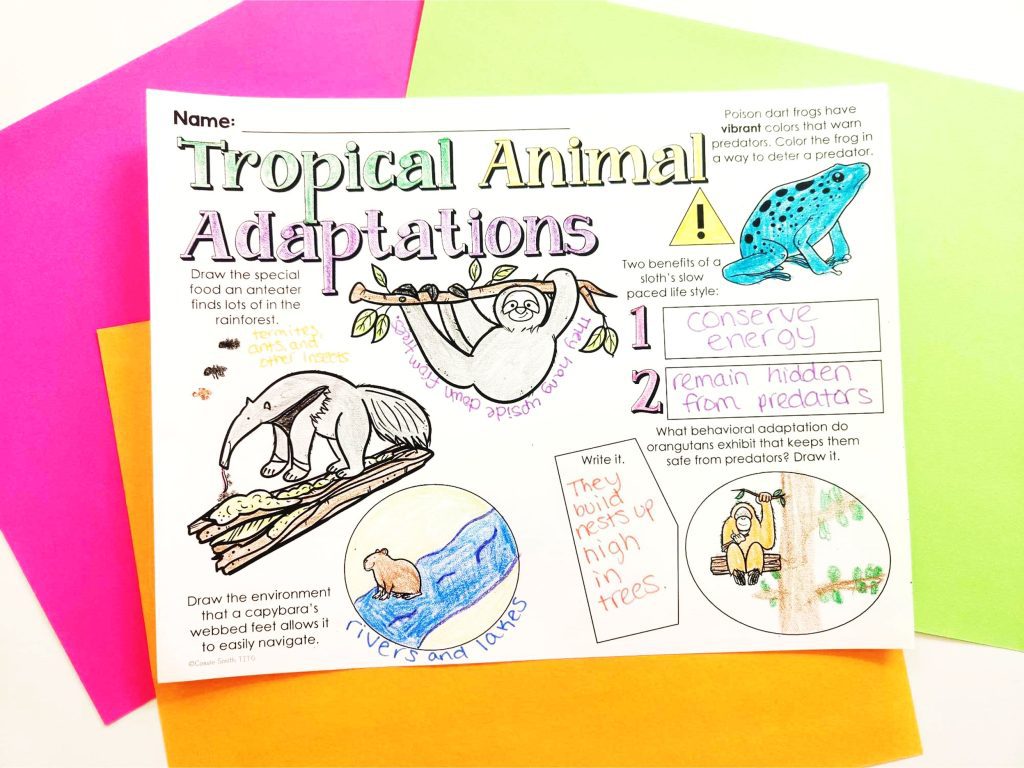
Extra Tips for Teaching Animal Adaptations
Here are a few ideas to take your animal adaptation lesson plans even further:
- Tie in food chains: Have students think about how adaptations help animals find food or avoid predators in their ecosystems.
- Study biomes: Learn the climate of various biomes and how it can be difficult for animals to survive there without their adaptations.
- Incorporate free educational materials: Videos, articles, or real-life examples of adaptations can always enrich your lesson.
- Use interactive whiteboards: Take a digital spin on your lessons with digital science lessons!
More Animal Adaptation Games for Your Classroom!
- Adaptation Charades: Have students cut up a list of adaptations. Students will pick one and act out an animal adaptation (like a polar bear’s thick fur or a desert lizard burrowing to cool off) while their classmates guess whether it’s a behavioral or physical adaptation. Bonus: Assign each student a biome for extra variety!
- Biome Match-Up: Create cards with animal adaptations (e.g., “thick fur,” “nocturnal hunting”) and different biomes (like “Arctic” or “Desert”). Students race to match adaptations with the correct biome and identify whether they’re behavioral or physical.
- Adaptation Hunt: Hide adaptation cards around the classroom labeled as physical or behavioral (e.g., “webbed feet,” “migration”). Students work in teams to “hunt” for adaptations, categorize them, and match them to a biome like rainforest, mountain, or tundra. They can also work as a group to name different animals with those adaptations. This is a great way to help them learn their science vocabulary words.
- Survival Spin: This is a fun hands-on activity! Create a spinner with different biomes and another with animal adaptations. Students spin both and explain how the adaptation (e.g., “camouflage”) would help an animal survive in that biome, deciding if it’s behavioral or physical.
- Guess the Adaptation: Show students a picture of an animal with a visible adaptation (like a camel’s hump or a penguin huddling). Students write down whether they think it’s behavioral or physical and what biome it’s from—then discuss as a class!
- Comic Strip: Students can create a 4 part comic strip illustrating any animal in any biome. The only rule is the comic strip must show the animal’s adaptation.
Whether you’re a 3rd-grade teacher following NGSS standards or teaching animal adaptations as part of your science unit, these worksheets, games, and other activities will engage your students and deepen their understanding of how animals survive in their habitats.
Get more 3rd Grade NGSS activities! Check out this unit:



